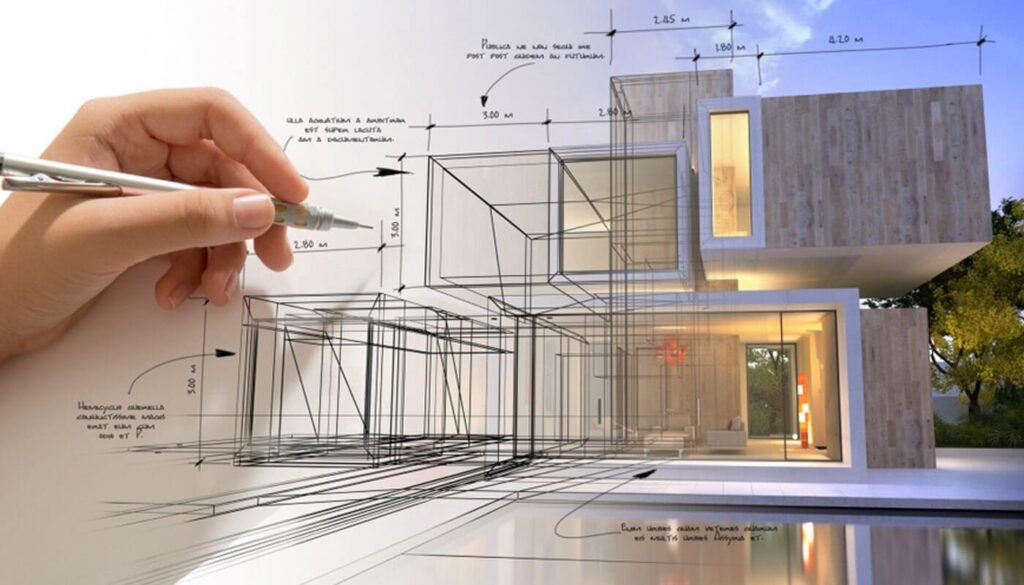Transforming Rooms: The Vision of CDA Architects for Modern Living
Transforming Rooms: The Vision of CDA Architects for Modern Living
Blog Article
A Thorough Introduction of Building Styles and Their Impact on Modern City Preparation and Growth
Architectural designs have actually long served as a mirror to the societal values and technical improvements of their time, playing an essential duty in forming modern-day city planning and advancement. From the grandeur of Neoclassicism to the utilitarian technique of Brutalism, each style has introduced one-of-a-kind ideas that influence metropolitan aesthetic appeals and performance.
Historic Review of Building Designs

As societies transitioned with the Middle Ages, Gothic design arised, characterized by its verticality and intricate describing, mirroring the spiritual ambitions of the age. The Renaissance noted a revival of classical ideals, merging art and style in innovative manner ins which influenced subsequent styles throughout Europe.

Today, architectural styles remain to develop, driven by globalization and sustainability worries, mirroring a vibrant interplay in between heritage and technology. This historic overview highlights the significance of architecture as a mirror of societal evolution and as a catalyst for city growth.
Secret Architectural Styles Explained
The variety of building styles reflects the myriad impacts that shape our constructed environment, each embodying distinctive characteristics and cultural values. Key architectural designs include Timeless, Gothic, Baroque, Modernism, and Postmodernism, each standing for unique historical contexts and aesthetic approaches.
Timeless design, rooted in ancient Greece and Rome, stresses balance, percentage, and using columns (cda architects). On the other hand, Gothic design, thriving in the center Ages, is characterized by pointed arcs, ribbed vaults, and flying buttresses, creating a spiritual top quality in basilicas. Baroque style, arising in the 17th century, is marked by magnificence, elaborate decoration, and a dynamic interaction of light and shadow
Innovation, which acquired momentum in the very early 20th century, prioritizes function over kind, using new materials like steel and glass to produce minimalist structures. Postmodernism, reacting versus the austerity of Innovation, welcomes eclecticism and historic referral, frequently integrating lively components and paradox.

Effect On Urban Planning
In shaping the advancement of cities, building styles substantially affect urban planning decisions. The choice of architectural style commonly dictates the aesthetics, functionality, and overall character of metropolitan atmospheres.
Furthermore, architectural styles can impact zoning guidelines and land utilize policies. Urban coordinators must consider the prevailing architectural patterns when creating districts, guaranteeing that brand-new growths balance with existing structures. This consideration cultivates cohesive metropolitan landscapes and enhances area identity.
The execution of particular building designs can additionally influence socioeconomic factors within a city. Premium modern layouts might attract affluent citizens and businesses, leading to gentrification, while a lot more budget friendly housing remedies could prioritize practical and lasting designs to accommodate varied populaces. cda architects. Inevitably, the interplay in between architectural styles and metropolitan preparation develops dynamic cities that reflect both historical context and modern requirements, shaping the lived experiences of their occupants
Sustainability and Modern Style
Architectural styles play an essential function in dealing with modern obstacles, particularly in the world of sustainability. As city areas more information increase and ecological problems heighten, contemporary architecture increasingly accepts lasting layout principles that focus on power efficiency, source conservation, and minimal environmental impact.
Contemporary building activities, such as biophilic layout and environment-friendly architecture, supporter for structures that harmonize with their environments, utilizing natural products and advertising biodiversity. These designs frequently integrate sustainable power resources, such as photovoltaic panels and wind turbines, to minimize reliance on fossil fuels and reduced carbon impacts.
Furthermore, the assimilation of advanced modern technologies, such as wise structure systems, improves power administration, maximizing resource use while guaranteeing owner comfort. Ingenious water administration methods, including rainwater harvesting and greywater recycling, additional contribute to lasting metropolitan settings.
Especially, sustainability prolongs past ecological worries; it encompasses social and financial measurements. By promoting neighborhood wellness and advertising inclusivity, contemporary architectural designs straighten with sustainable development objectives. Consequently, the evolution of building methods proceeds to shape durable cities that not just fulfill the requirements of today but also protect the future for generations to come.
Community Engagement in Style
Community interaction in layout works as a critical bridge between designers and the populations they serve, making sure that the built atmosphere reflects the demands and aspirations of its customers. This collaborative procedure welcomes community participants to add their insights and preferences, fostering a sense of ownership and obligation toward the rooms they inhabit.
Efficient community involvement employs different methods, such as workshops, studies, and public discussion forums, to gather varied viewpoints. These techniques assist in a two-way dialogue, enabling designers to comprehend regional contexts while equipping citizens to voice their worries and desires. This inclusivity not just boosts the design high quality yet also advertises social equity by addressing the special challenges faced by marginalized groups.
Furthermore, community interaction can lead to ingenious services that could not arise in a conventional design process. By incorporating regional expertise and social worths, designers can create rooms that resonate web even more deeply with users, enhancing functionality and sustainability. Ultimately, focusing on area interaction in style procedures results in atmospheres that nurture social interactions, support well-being, and reinforce neighborhood connections, therefore playing a crucial function fit modern-day urban landscapes.
Conclusion
Architectural styles have actually greatly affected contemporary city preparation and development, mirroring developing social pop over to this site and technological contexts. The integration of historic looks with contemporary requirements cultivates city settings that prioritize sustainability and area involvement. As cities proceed to expand and adapt, the ongoing discussion in between building heritage and modern layout concepts will stay necessary in creating inclusive, vivid spaces that improve high quality of life and promote social equity. The future of metropolitan advancement rest on this unified equilibrium.
Report this page